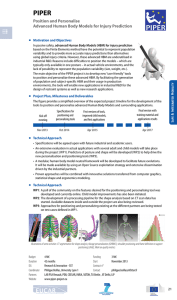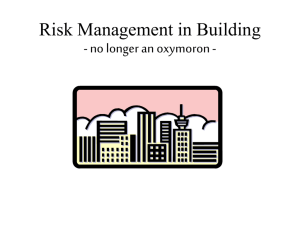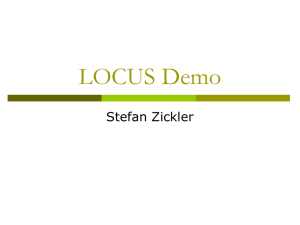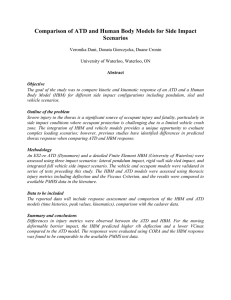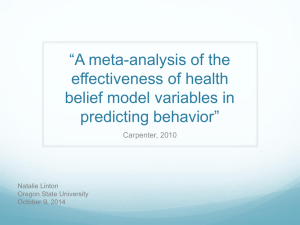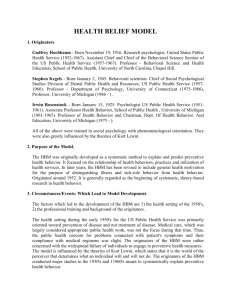- Detroit Engineered Products
advertisement
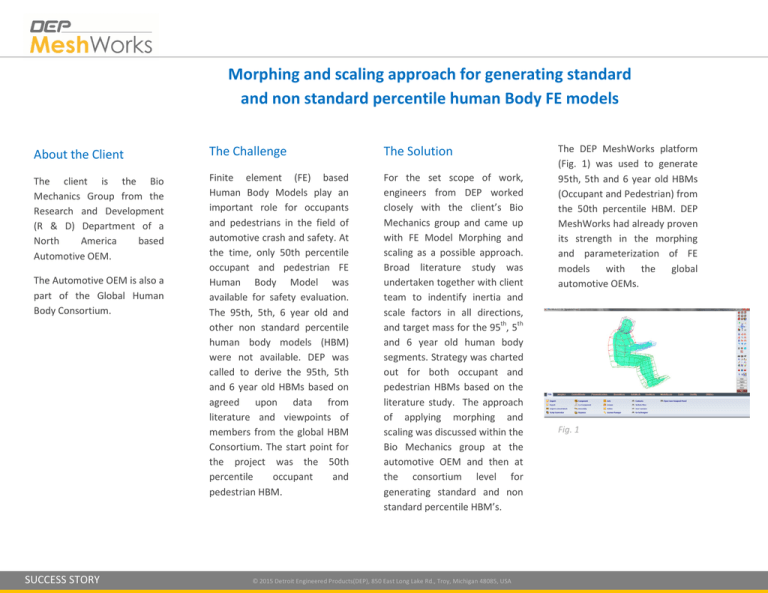
Morphing and scaling approach for generating standard and non standard percentile human Body FE models About the Client The Challenge The Solution The client is the Bio Mechanics Group from the Research and Development (R & D) Department of a North America based Automotive OEM. Finite element (FE) based Human Body Models play an important role for occupants and pedestrians in the field of automotive crash and safety. At the time, only 50th percentile occupant and pedestrian FE Human Body Model was available for safety evaluation. The 95th, 5th, 6 year old and other non standard percentile human body models (HBM) were not available. DEP was called to derive the 95th, 5th and 6 year old HBMs based on agreed upon data from literature and viewpoints of members from the global HBM Consortium. The start point for the project was the 50th percentile occupant and pedestrian HBM. For the set scope of work, engineers from DEP worked closely with the client’s Bio Mechanics group and came up with FE Model Morphing and scaling as a possible approach. Broad literature study was undertaken together with client team to indentify inertia and scale factors in all directions, and target mass for the 95th, 5th and 6 year old human body segments. Strategy was charted out for both occupant and pedestrian HBMs based on the literature study. The approach of applying morphing and scaling was discussed within the Bio Mechanics group at the automotive OEM and then at the consortium level for generating standard and non standard percentile HBM’s. The Automotive OEM is also a part of the Global Human Body Consortium. SUCCESS STORY © 2015 Detroit Engineered Products(DEP), 850 East Long Lake Rd., Troy, Michigan 48085, USA The DEP MeshWorks platform (Fig. 1) was used to generate 95th, 5th and 6 year old HBMs (Occupant and Pedestrian) from the 50th percentile HBM. DEP MeshWorks had already proven its strength in the morphing and parameterization of FE models with the global automotive OEMs. Fig. 1 The concept of Control Block based morphing and scaling with reference to local co ordinate system established at HBM Segment CG was applied systematically across HBM segments. The input HBM model was in LS DYNA format. After morphing the mass, CG location and volume of HBM segments were checked against the data from literature. The HBM model output from MeshWorks closely matched the data in the literature and was approved by the Bio Mechanics group and the Global HBM consortium. The 95th, 5th and 6 year old morphed output FE model behavior was checked by the R&D group using standard vehicle level NCAP and pedestrian load cases. The DEP Edge The DEP MeshWorks driven approach of Morphing and Scaling for generating other standard and non standard HBM’s in a systematic yet quick process helped the client’s Bio Mechanics group carry forward their research objectives in the area of automotive crash and safety. Fig2. Control Blocks with LCS Fig.3 Morphing/Scaling Segment SUCCESS STORY Skull This methodology of morphing and scaling can be extended beyond to generating even other non standard percentile HBM’s. © 2015 Detroit Engineered Products(DEP), 850 East Long Lake Rd., Troy, Michigan 48085, USA Read more online at www.depusa.com
